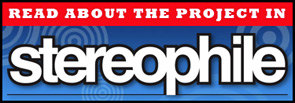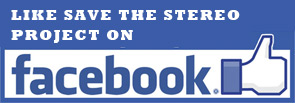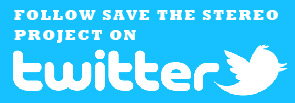16. If you have a marketing idea that is not listed above, please describe it below.
Offer compare listening sessions via headphones at shopping malls, music shops, etc. Individuals need to experience the difference between mp3 and flac [for instance].
Target iTunes, Spotify, Beats, etc. consumers to promote online high-definition music sales
Stereo is a hobby.
Offer seminars and clinics on how to get the best out of a system and facilitate the understanding the difference between the recording and the reproduction.
Retailers that may have shunned away from high-performance audio sections (including components) should get back into the game, and provide high-quality audio components for every consumer. Same goes for retailers that sell recorded music. They should expand their genre categories (of vinyl and CD/DVD-A/Blu-Ray Audio titles) to provide variety for every person, for every style, and for every musical taste.
How do you get to the colleges and universities? We have sold product to colleges and such that have music appreciation classes. Is there even a way to get on the curriculum. In New York, some school teaches the repair of watches.
The key is stop making audiophiles seem like nerds, geeks, and out of touch equipment freaks with too much money to spend. Don’t focus on the expensive or the extreme high end, but on better sound in general. Stop referring to audiophile music, and make it clear that all music is better “your music is better” of better gear.
It’s very important that a campaign be constructed in a way consistent with the target audience’s methods for consumption. If it is a traditional campaign, the effort will likely be viewed as a originating from dinosaurs and therefore be deemed unattractive despite the content.
One must broaden the focus to include not only program media, but loudspeakers and headphones. Real world demos are a key to such activity.
Set up listening demonstrations in malls and movie theaters.
Every suggestion has been described.
Do not forget the used vinyl/cd/dvd stores. For example, I shop at the Record Exchange in Salem, Massachusetts. Also used equipment stores like Welfare Records in Haverhill, Massachusetts should be included.
Hate to say it, but approaching “celebrity” audiophiles and music lovers for endorsement or advertising opportunities should be considered. They do seem to have an unnatural influence over the younger generation. Done tastefully, it might work well.
Concerts and cultural events such as art exhibits.
Organize listening sessions with affordable components and with simple setups. In my experience, those are the two main limitations people perceive. Contact interior design magazines and have them show high-end components which can be also attractive. Most of the success of all-in-one devices is that they are more discrete.
In interviews, ask musicians/artists what equipment they use at home and abroad and leverage support from there.
By using Twitter are you only focusing on the younger generation? Surely there are some of the older generation that have given music up so to speak, but if they knew about and heard good quality stereo, then it may spark an interest.
Why limit the funding to Industry? Why not reach out to the consumers?
Peer-to-peer and celebrity endorsements have a stronger hook than paid ads. Finding hip musicians, actors, other public figures who appreciate and enjoy higher quality audio experiences and getting them to talk and Tweet about it. Carrying the Save The Stereo message to their fans and followers.
If Apple/iTunes can become involved in the marketing of high resolution audio, it would certainly add credibility to the campaign. The brand and outlet are fairly synonymous with digital music.
Not sure if this counts, but I think the next generation of audiophiles will be mostly attracted to music servers Right now, the whole genre is too confusing and the servers are either very limited or way too expensive for entry level audiophiles. Making this much more transparent to the user, more capable (large amounts of local storage, CD ripping capability and easy access to hi resolution internet streaming, and cloud utilization are all key.
Number one, promote stereo enjoyment in any and all upscale lifestyle publications, websites, etc. Reinforce the idea that it is part of “the good life”. Number two, reinforce the importance of loudspeakers and inclusion of same as a normal, healthy lifestyle element; headphones cannot deliver ‘the complete experience’.
Marketing must focus on celebrity endorsement and case studies.
A video showing a group of hip (younger?) people running around a busy city and blowing people’s minds by connecting a decent portable USB DAC (eg., iFi nano iDSD) and good closed-back headphones (eg. Sennheiser Momentums or Audeze LCD-XCs) to the smartphones, tablets, or laptops that belong to the people they meet and letting them hear their music for the very first time! The video should catch the jaw drops that I always get when I do this for people I meet.
Expand music appreciation in schools. Host seminars on how to appreciate and recognize good sound.
We must represent high performance audio as reachable for middle income consumers and not the outrageously priced (five and six figures) equipment the magazines promote.
Social media is all you need. Don’t waste money that could feed homeless and orphans on advertising.
Advertising in the mainstream, is the way to go. We’ve seen what we get from the industry.
Send me two free (I’ll pay for it later as equipment rises) Save The Stereo T-shirts and one coffee mug (not cup). Cheers!
Product placement on TV and movies. For example, a TV series such as The Big Bang Theory is perfect for this and the equipment and its musical realism, could be incorporated in the script.
A high quality stereo system for music must also function as a high quality multichannel home theater/gaming system. Next generation listeners will not have the money, space or inclination for two separate systems. If they are forced to choose, the home theater/gaming system will win.
Expose what products are available and educate the consumer. They are smart enough to make a decision on their own.
Really need to have this broadcasted on the radio and XM.
It’s the products, not the marketing that faults!
Do demos at music festivals and other music/young people oriented events. Show high performance budget systems and all the possibilities of analog and digital sources. Make it simple; integrated amps with built-in DAC, powering either good but affordable cans or a pair of entry level speakers. Add one digital and one analog source. Showcase this system against boom box or OEM earbuds. I think that is the path, if you try push to hard it will crack. You should not expect people moving from MP3, straight to five figures systems. You should also make the conversation clear and friendly, and never fuel the usual feuds that exist in audiophile community like tubes versus solid state, or analog versus digital. I hope I can help.
“High-End Audio demonstration workshops”, “Stereo” magazine (Germany) organizes workshops to learn all about high-end audio.
A demo day: high-end audio gear demoed in mainstream venues.
Push independent dealers, not chain stores.
Live music is very popular. Use stock footage/photos to promote the idea that high-performance audio reproduction can ‘bring the dead to life (or live) in your living room’.
Engage local musicians, music blogs, and venues in the promotion of higher quality sound
If there is anything I miss it’s the stereo shows in Philadelphia. I have not seen a major audio show for gear and music at any major venue within the city of Philadelphia in years. It should be linked to the new emerging music scene, as well as Classical and Jazz.



